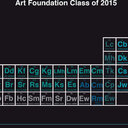Effects of RU486 on Glu-6-pase gene expression in hemorrhage and resuscitation.
Klíčová slova
Abstraktní
To assess the role of glucocorticoid receptor antagonists and mediators released by Kupffer cells and other resident macrophages, we have used RU486 and gadolinium chloride to prevent the induction of glucose-6-phosphatase (Glu-6-Pase) gene expression in the liver following hemorrhagic shock (HS) and lactated Ringer's (LR) solution resuscitation. HS was induced in fasted, anesthetized, and cannulated rats by rapid phlebotomy to a mean arterial pressure of 40 mmHg and maintained for 30 min by withdrawal or infusion of blood. The LR solution group underwent induction and maintenance of HS for 30 min followed by LR resuscitation. Rats were injected with gadolinium chloride (7 mg/kg) to inhibit the phagocytic function of Kupffer cells, and with glucocorticoid receptor antagonist RU486 (20 mg/kg) prior to induction of HS. Arterial blood samples were obtained and livers were freeze clamped in liquid nitrogen and stored at -70 degrees C for subsequent analysis. Northern blot analysis indicated that Glu-6-Pase mRNA abundance increased 2-fold in HS rats and a further 2-fold with resuscitation. Gadolinium chloride administration had no significant effect on Glu-6-Pase mRNA abundance in HS or in LR solution. In contrast, RU486 pre-treatment reduced Glu-6-Pase mRNA by about one half in HS rats compared with control and that in LR solution to normal. This was associated with a normalization of Glu-6-Pase activity and plasma glucose toward pre-hemorrhage levels. These results suggest that gadolinium chloride inhibition of macrophage factor release has no effect on the induction of Glu-6-Pase mRNA during HS or in LR solution resuscitation. On the other hand, the suppression of Glu-6-Pase mRNA by RU486 suggests that glucocorticoids are responsible for the induction of the mRNA in HS and during LR resuscitation. KEYWORDS-Shock, hyperglycemia, corticosterone, gadolinium chloride, diltiazem, animal model, mRNA


